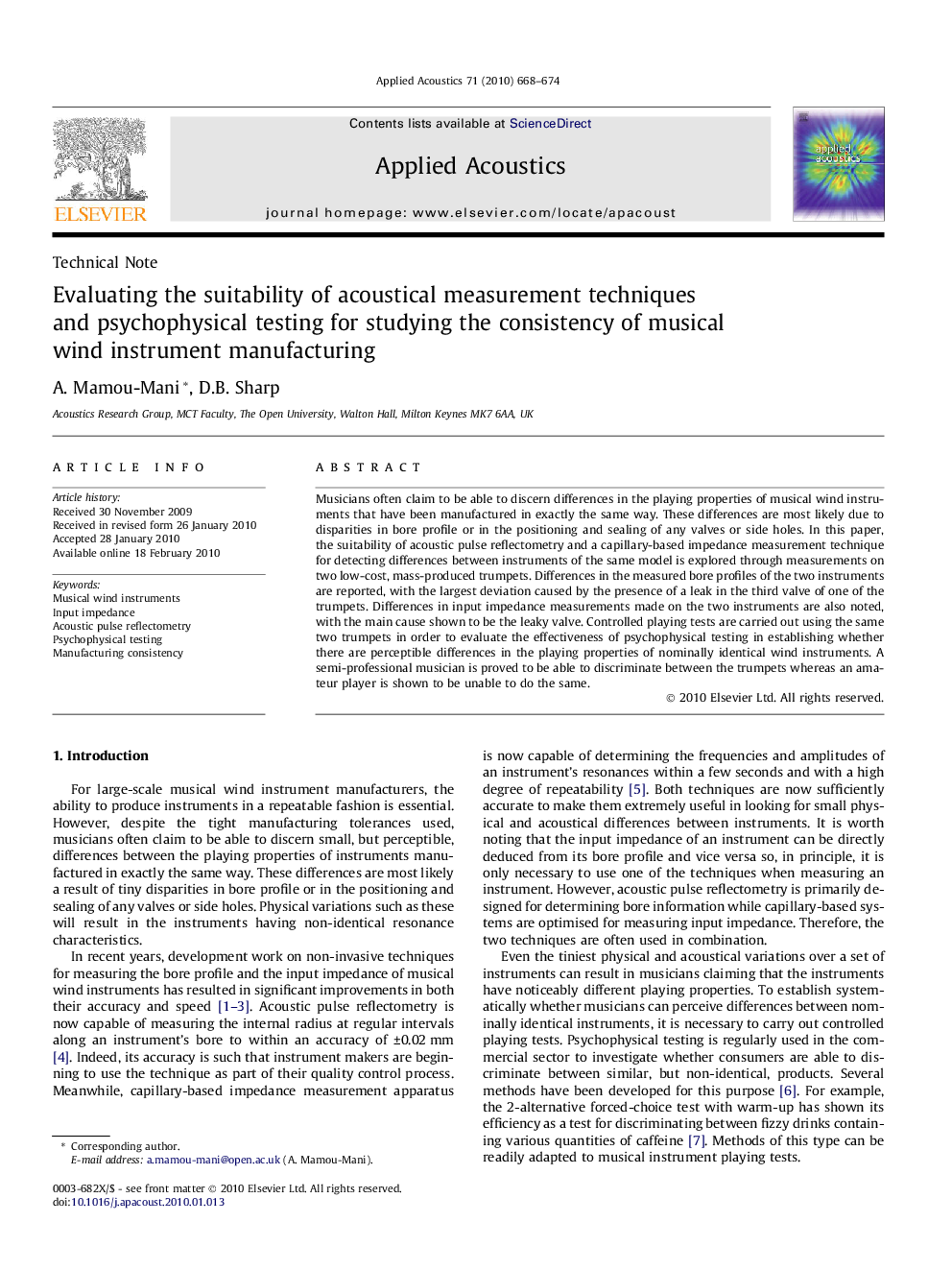| Article ID | Journal | Published Year | Pages | File Type |
|---|---|---|---|---|
| 754978 | Applied Acoustics | 2010 | 7 Pages |
Musicians often claim to be able to discern differences in the playing properties of musical wind instruments that have been manufactured in exactly the same way. These differences are most likely due to disparities in bore profile or in the positioning and sealing of any valves or side holes. In this paper, the suitability of acoustic pulse reflectometry and a capillary-based impedance measurement technique for detecting differences between instruments of the same model is explored through measurements on two low-cost, mass-produced trumpets. Differences in the measured bore profiles of the two instruments are reported, with the largest deviation caused by the presence of a leak in the third valve of one of the trumpets. Differences in input impedance measurements made on the two instruments are also noted, with the main cause shown to be the leaky valve. Controlled playing tests are carried out using the same two trumpets in order to evaluate the effectiveness of psychophysical testing in establishing whether there are perceptible differences in the playing properties of nominally identical wind instruments. A semi-professional musician is proved to be able to discriminate between the trumpets whereas an amateur player is shown to be unable to do the same.
